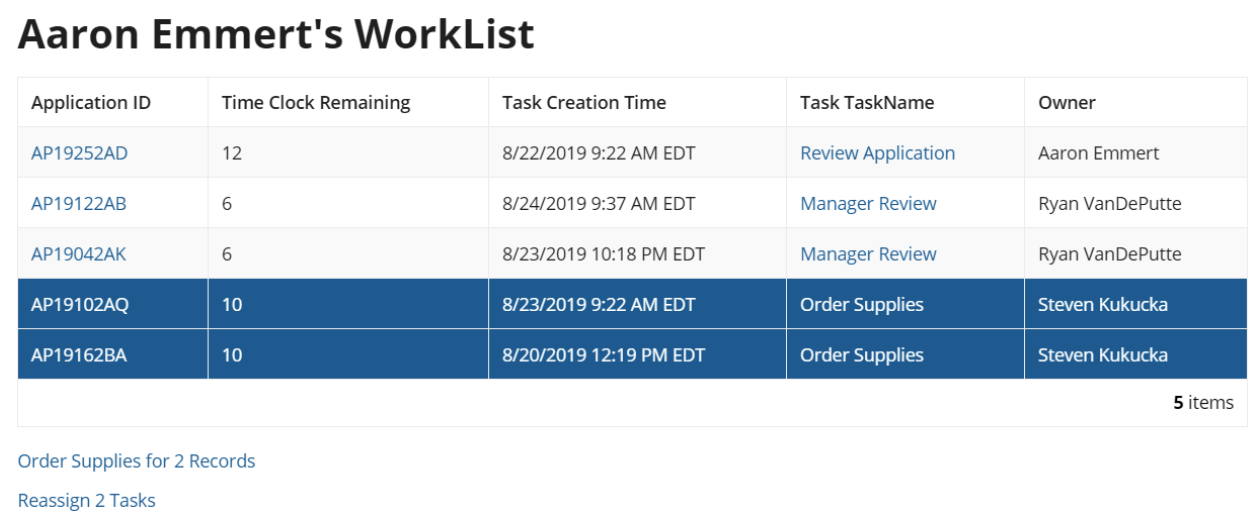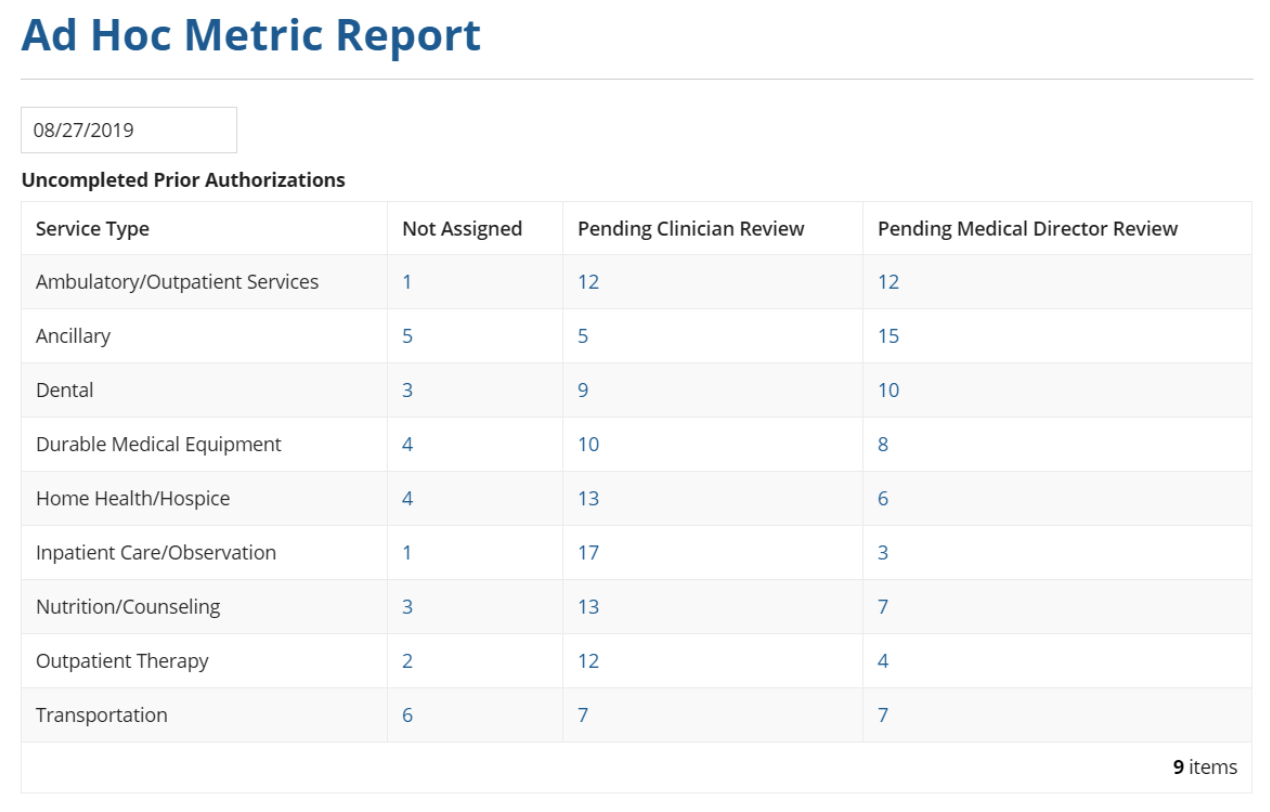
Using Appian effectively
By Aaron Emmert
My previous posts talked about the benefits of Appian’s rapid development capabilities and its natural pairing with the agile development methodology. This post discusses how even though you have the right tool for the job, it doesn’t guarantee it will be used effectively. Therefore, we’ll now take a look at how Appian optimally addresses common use cases across different lines of business, including healthcare.
Worklist
Regardless of your business type, you’ll need some kind of method of showing what tasks need to be done, and when. Depending on the task, some may have a higher priority than others. For best performance, we use a worklist in Appian. A worklist is essentially a grid with a series of drillable data points. The goal is to only show required information so it doesn’t overwhelm the user with data. It also allows them to quickly see what they have to do and be able to complete their tasks with a few clicks.
The example above shows a worklist with tasks that need to be completed within a given number of days. You can click an Application ID link to view that record or click on the Task Name to start processing the task. Also, instead of doing one by one, you can select multiple rows and perform related actions in bulk. This empowers users by increasing their productivity and allowing them to complete multiple tasks in one go, all from the worklist.
A real-world example is document generation for letters that need to be sent out to patients regarding clinical trials. Instead of boring yourself with repetitive actions, select all tasks that require the letter all at once!
Reports
Let’s say you have a series of data points that need to be reported on. For best performance, we’ll utilize the database to perform all the calculations and leverage Appian to display them in a readable way using grids and graphs. Anything you’d like to see with more detail can be designed to be drillable. The goal for reports is to show a large set of data while also being able to drill down to a single record: to see more information or take a related action. Since we built the report in this manner, we’re able to show hundreds of data points, split into multiple grids, on a single screen, all while having a quick load time. The example grid below, with fewer data points, follows the above paradigm.
Troubleshooting
For backend support and non-business users, it’s important to mention how Appian helps maintain applications. One of the benefits of Appian is how quickly you can debug and resolve issues. When I worked in production support, we were able to quickly troubleshoot by having new users hop on a call for immediate assistance. I was then able to quickly investigate and diagnose issues. This was possible because of the way Appian executes its workflows allowing me to see an audit history of a user’s specific workflow and plug values into methods that may relate to their bug. Although we ideally want to prevent defects from happening in the first place, quickly diagnosing them will give users confidence in the application.
Evolve the wheel
The Appian application is made up of components, giving developers the ability to import objects from other applications they’ve previously worked on for even greater sprint velocity; such as worklists. This way we don’t need to reinvent the wheel, but we can strive to review our past work to see if there’s a better way of completing a requirement at hand.
It’s a good idea to take advantage of the latest version of Appian if it provided new functionality or fixed a bug related to your implementation. For example, some ways of doing things in 18.1 can be done differently in 19.2. So if you’re just reimplementing what you did before, you may miss something.
Whatever the case may be, when used effectively, Appian allows for rapid development, efficient workflows, component reusability, and quick defect resolution. Many companies find that a good implementation partner can help them get the most out of their Appian investment.
About the author
As an Appian developer, Aaron strives to meet and exceed the expectations of our clients. He grew up in Superior, Wisconsin, where he’s a fan of the Packers, dairy products, and cider. His hobbies include walking the dog, exercising, reading and playing video games.




